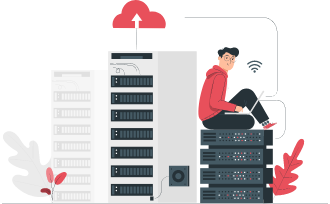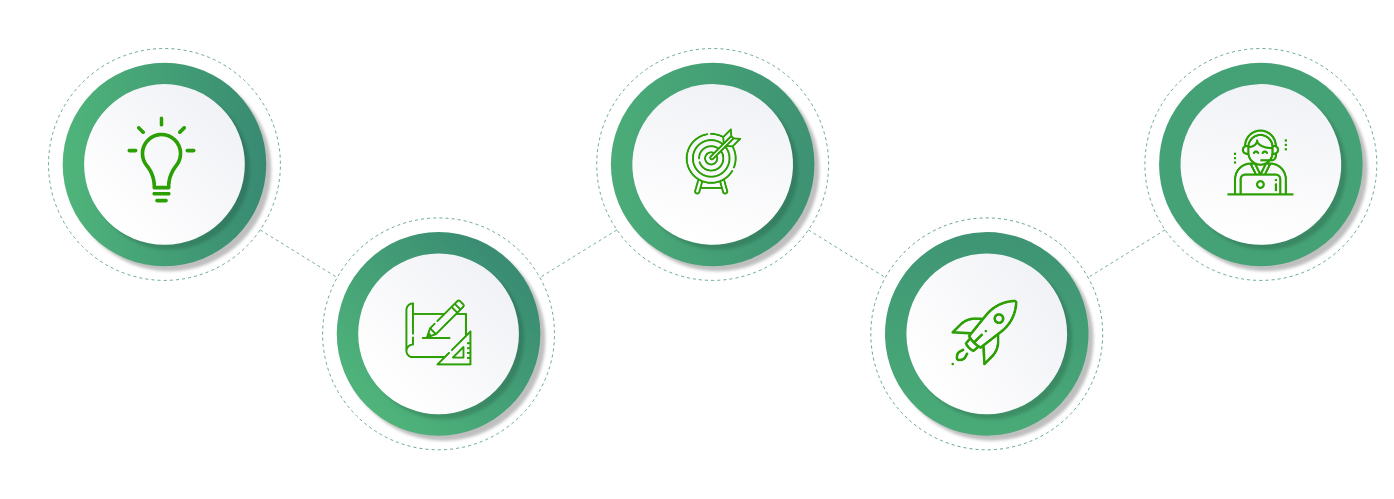AS400 migration to cloud is a strategic move that elevates your IBM i applications by meeting stringent physical audit requirements. With superior security and availability compared to on-premises servers, moving to the cloud presents a cost-effective solution, drastically reducing data center expenses.
Challenges Preceding an AS400 Migration
Limited Knowledge
With limited knowledge, the authorities are often hesitant to take the leap of faith.
Migration Risks
Migration, along with its plethora of advantages, also entails risks which, if not handled with expertise, can have serious repercussions.
Fear of Change
After spending quite a significant amount of time on the native, on-prem AS400, inertia overpowers and feeds on the fear of change.
Challenges Preceding an AS400 Migration
Limited Knowledge
With limited knowledge, authorities are often hesitant to take the leap of faith.
Migration Risks
Migration, along with its plethora of advantages, also entails risks which if not handled with expertise can cause serious repercussions.
Fear of Change
After spending quite a significant amount of time on the native, on-prem AS400, inertia overpowers and feeds on the fear of change.
Choose AS400 Cloud Migration That Makes Sense to Your Business
Decommissioning the hefty IBM i hardware while keeping the existing interface intact.
Often referred to as 'Lift & Shift', involves migrating the on-prem AS400/IBM i to the IBM cloud or an iSeries cloud with almost negligible changes to the code. This step is often viewed as the "first step" towards complete AS400 cloud migration and transformation.
Application re-host, at a glance:
Quick and easy
Among AS400 migration to cloud options, application re-host is straightforward and highly preferred.
Low on risk
With minimal to no code modification required for AS400 cloud migration, the risks are significantly low.
Easy on the pocket
Being less resource-intensive, it makes ibm i cloud migration more cost-effective, easing expenditure concerns.

Make room for your AS400 to breathe, migrate jobs to Cloud.
The AS400/iSeries system performs tasks (jobs) ranging from one end of the spectrum to the other. While some might be critical, others can easily be pulled out of the system, thus, unburdening the AS400 while also ensuring optimal usage of resources.
Batch job migration, at a glance:
Optimal resource Use
With batch jobs out of the system, you need not worry about resource deficit.
Lower operational costs
Moving jobs to the Cloud implies costs incurred only for and when the resources are used.
Simplify your landscape
Transfer heavy-duty processing to cloud for easier maintenance.

Get an edge over your competitors by revamping your AS400 for good.
Enterprises can resort to re-engineering their IBM systems to a new micro services architecture on the Cloud. This helps in reframing the current AS400 system and provides a better overall user experience. It is the most extensive process amongst the lot, but when enterprises aim for a 360-degree improvement, application restructuring is the way to go.
Application Re-engineering, at a glance:
Improved stability
With the AS400 migrated to a new microservices architecture, it only adds to the stability quotient of the system.
Performance
There's tremendous improvement in the performance, allowing organizations to gain a competitive edge.
Business continuity
With modern technologies, the availability of resources to support those diminishes business risk.

Benefits You Would Reap With AS400 to Cloud Migration
Business Continuity
A bigger resource pool to ensure sustenance for the long haul.
End-user Productivity
Solutions built with modern technologies allow for better UX.
Cost Saving
Improve IT processes & reduce operational costs.
Accessibility
Freedom to access your data without any time or place constraints.
Scale with Flexibility
Scale up or down business processes based on the IT requirements.
Data Analytics
With data in the cloud, in-depth analytics, AI and ML is made easier.
AS400/iSeries to Cloud Migration Approach

Assess
A thorough technical & functional assessment of the current landscape.
Strategize
Establish a migration plan, decide on the level of cloud integration & establish KPIs.
Set Objectives
Define objectives and prioritize tasks that need to be migrated to the Cloud.
Execute
Migrate the application/jobs from the current setup to the Cloud.
Support & Maintenance
A complete system test followed by L2/L3 support & real-time assistance.
AS400/iSeries Migration Approach
Assess
A thorough technical & functional assessment of the current landscape.
Strategize
Establish a migration plan, decide on the level of cloud integration & establish KPIs.
Set Objectives
Define objectives and prioritize tasks that need to be migrated to the Cloud.
Execute
Migrate the application/jobs from the current setup to the Cloud.
Support & Maintenance
A complete system test followed by L2/L3 support & real-time assistance.
Talk to Our IBM i Experts & Pave Your Way to Cloud
Drop your details below and we’ll get back to you at the earliest
Worth Exploring
A glimpse of our industry expertise
